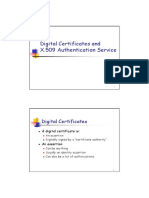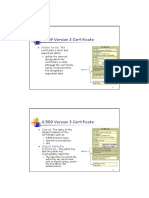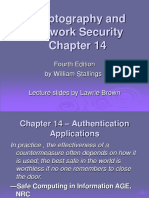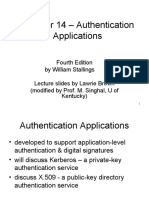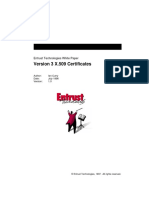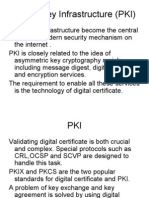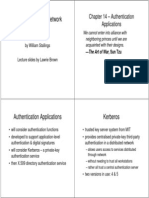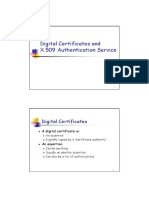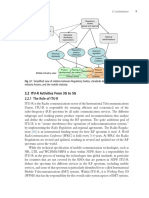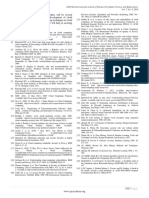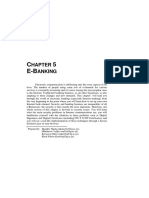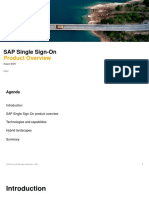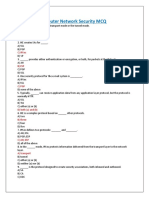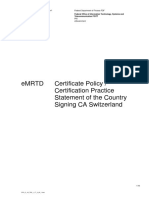0% found this document useful (0 votes)
90 views5 pagesX.509: Certificate Revocation List (CRL)
The document discusses X.509 certificate revocation lists (CRLs) and their delivery methods of polling and pushing. It also describes the one-way, two-way, and three-way authentication procedures used with X.509 certificates. Version 3 certificates were introduced to address inadequacies in version 2 by allowing additional fields and extensions to be added to certificates.
Uploaded by
Shiva prasadCopyright
© © All Rights Reserved
We take content rights seriously. If you suspect this is your content, claim it here.
Available Formats
Download as PDF, TXT or read online on Scribd
0% found this document useful (0 votes)
90 views5 pagesX.509: Certificate Revocation List (CRL)
The document discusses X.509 certificate revocation lists (CRLs) and their delivery methods of polling and pushing. It also describes the one-way, two-way, and three-way authentication procedures used with X.509 certificates. Version 3 certificates were introduced to address inadequacies in version 2 by allowing additional fields and extensions to be added to certificates.
Uploaded by
Shiva prasadCopyright
© © All Rights Reserved
We take content rights seriously. If you suspect this is your content, claim it here.
Available Formats
Download as PDF, TXT or read online on Scribd
/ 5


